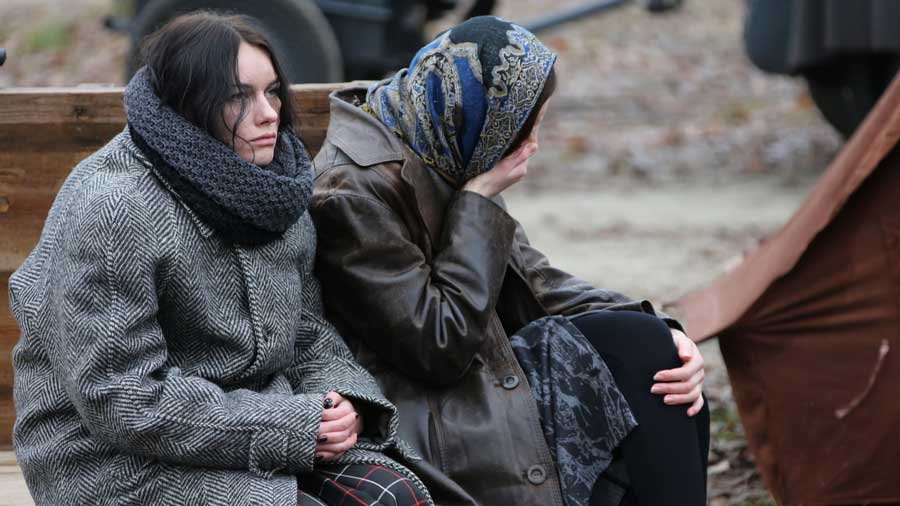Housing Ukraine’s refugees
Many thousands of people are arriving in the UK to escape their war-torn homeland. Where will they go and how will they be housed?

GOVERNANCE
Image: Istock

Derek Long
Director at housing market analysts, arc4
More than five million people have already fled Ukraine (with more than six million also displaced within its borders) – the largest internal population movement within Europe since 1945. As the refugees reach our shores, councils and registered providers will need answers to these key questions.
Where will the refugees go?
So far, 27,100 have entered the UK via Ukraine Family Visas and Homes for Ukraine sponsorships for those without family links, we have already over-topped the levels of Ugandan, Asian and Vietnamese boat people waves during the 1970s. A further 60,000 visas have been awarded, with more to come.
Unlike 1972 or more recent waves, central government is not distributing the incomers. Capital cities are magnets. Newham, Ealing, Hounslow and Waltham Forest all have more than 1,000 native Ukrainians. Although 51% of all Ukrainian-born residents in England and Wales live in London, the doubling of the city’s Ukrainian population since 2011 is due to economic and academic in-migration. This means London’s true capacity to attract relatives will be tempered by how many Ukrainians are young households with housing challenges, or skilled worker/student visa holders who are barred from sponsoring relatives.
Obviously, the Homes for Ukraine scheme will also spread incomers around, so refugee numbers may spike in unexpected places. Ukrainian heritage communities around Manchester, Bradford/Leeds and Nottingham would be likely candidates. The sponsorship data (excluding family visas) suggests conurbations, prosperous areas and holiday locations are favoured.
“Occupying poor housing in challenged neighbourhoods would be a terrible outcome for refugees and store up local policy problems for the future. Much better – and fiscally more efficient – to invest in regulated social housing where quality is assured and support is much easier.”
Will we offer decent housing?
Any roof is better than none, so the displaced often end up in empty or unpopular homes (cheap, unpopular markets were a target for previous government contractors). Marginal rentals and Airbnb-type lets hit by the pandemic might be attracted. However, occupying poor housing in challenged neighbourhoods would be a terrible outcome for refugees and store up local policy problems for the future. Much better – and fiscally more efficient – to invest in regulated social housing where quality is assured and support is much easier.
How long does a temporary visa last?
Refugees will secure a three-year temporary visa. ‘Temporary’ is a slippery term. For a refugee camp, temporary is on average 17 years.
For the stop-gap prefab homes I am currently working on, temporary exceeds 75 years…
Accordingly, the short-term fixes we adopt today (like marginal private rented sector) may be our wicked housing problem in five years’ time.
How far does the kindness of strangers extend?
75,000 UK households have applied to be sponsors. This generosity is humbling. But what happens when placements break down (as some already have).
The £350 a month ‘thank you’ payment is not rent. The housing rights of refugee guests are unclear. Local authorities are worried that placement breakdowns and the end of the six-month sponsorships represent a cliff edge for re-housing claims.

Can councils deliver a quality service?
Our Covid-worn councils are quietly absorbing yet another new role ‘welcoming’ refugees. The £10,500 per person allowance might be enough for a welcome process, inspections and safeguarding checks. But council tax income will not rise to meet additional complex education and social services challenges. A special subvention will be required.
The government’s migrant health guide webpage also points to manageable immunisation challenges, especially around TB and Covid-19. Councils and registered providers need to be sharp on this detail, especially in magnet local authority areas.
The road is long, with many a winding turn…
The invasion of Ukraine has changed the course of many millions of lives. Even with peace, many will not return to their damaged and menaced homeland. We now need to construct the road that leads us and Ukraine from the temporary to a safe and secure future.


